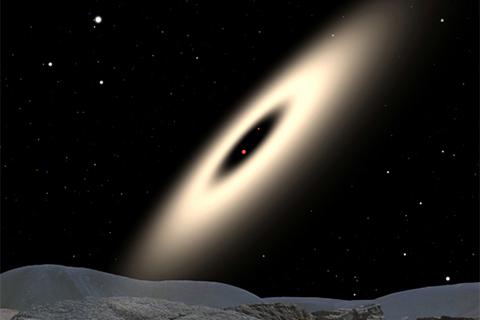How do stars reach their end?
The Big Balloon: When they finish burning the hydrogen in their core, average-sized stars such as our Sun start burning helium – which produces more energy, and pushes the outer layers of the star out like a huge balloon. Over thousands of years, the star becomes a red giant hundreds of times its previous size, and begins converting helium into carbon. Once that’s done, the next step would be to convert carbon into iron – but this requires not only intense heat but intense gravitational pressure. Medium-sized stars simply aren’t massive enough. When their nuclear furnace runs out of helium fuel, its energy can no longer keep the star expanded. The star collapses; nuclear fusion ceases. The carbon core, glowing like a coal, slowly cools into a frozen cinder.
The Sudden Boom: Huge stars are able to continue the nuclear fusion process, gradually converting their carbon core into iron. The iron fusion process is different, using up energy instead of creating it. With time, this upsets the gravitational forces holding the star together and the iron core suddenly implodes – creating a shockwave that rebounds outward in a spectacular supernova. What’s left? Either a tiny (20-kilometre) neutron star or a black hole – either way, an object so incredibly dense its gravity can crush atoms.
The Slow Doom: Very small stars (called red dwarfs) burn very slowly – so slowly that their entire lifespan is predicted to be more than a trillion years. Since that’s more than 70 times the age of the universe so far, we haven’t yet seen any of these little stars reach their end. Scientists think that they will just become dimmer and dimmer until they fade out.





